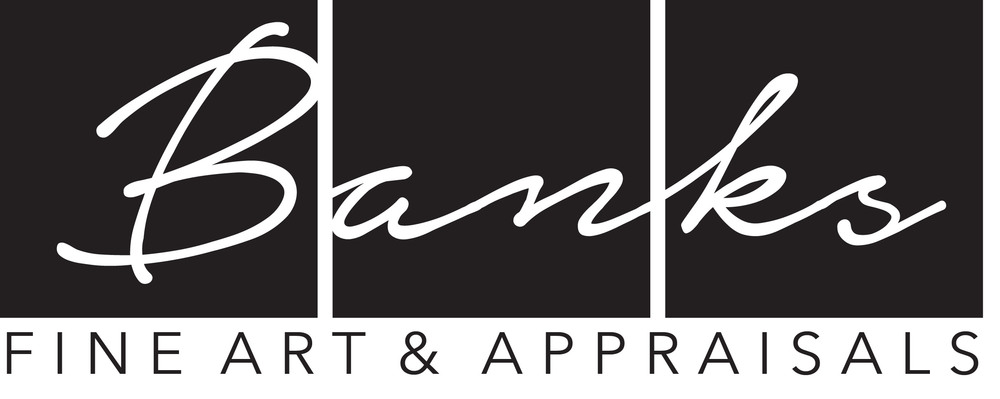Banks Fine Art to Close Retail Gallery in the Design District. Going back to Private Dealer.
March 26, 2014 - Michael Granberry Dallas Morning News
Today, the Design District is one of Dallas’ trendiest neighborhoods, teeming with more than 30 galleries. The worst of the 2008 economic downturn has faded, like the smell of acrid paint. The district, Bob says, is “booming.”
So why leave now? Despite the Design District being the place to be, the Bankses are leaving the gallery business. Banks Fine Art will close this summer, when the couple plans to focus on private dealing, sans the retail space. They will work from their home, as they did for 20 years before launching the gallery.
“We helped grow Dragon Street,” says Maloree, who loved having a 10,000-square-foot gallery on Dragon before moving into a 2,000-square-foot space on nearby Slocum five years ago. It’s now a coolly different Design District, with spiffy gourmet restaurants. At one point, its culinary delights were confined solely to Popeyes Chicken and Biscuits on Continental, near the Greyhound Bus Lines maintenance center. The setting once felt incongruous for art dealers, but no more.
Banks Fine Art specializes in what Bob calls “pretty paintings,” offering works by such artists as Raymond Thibesart, G. Harvey, Édouard Leon Cortès and Eric Sloane. That’s the gallery business. Bob also shoulders a different specialty, one he’ll continue after the gallery doors close. He’s a past board member of the Appraisers Association of America, serves often as an expert witness in courtrooms and was formerly an appraiser for the PBS television show Antiques Roadshow.
“Last summer, we took two whole months off,” Maloree says. “We rented a cottage on the Chesapeake Bay. Bob dickered on boats and sailed, and he was a totally different person. We came back, and I said, ‘Why, for the life of me can’t we have this pace?’”
They also sailed the emerald coast of Belize, exacerbating their desire to “semi-retire.” Bob is 56, Maloree 58, and their kids, Rachel and Sam, are grown-ups living elsewhere. They say it’s time to smell the roses that up to now have existed only in those pretty paintings. “I feel horrible,” Bob says. “Well, not horrible, but sad. I’m not really retiring, but I am retiring from the gallery. I don’t enjoy having to be at the gallery to keep the gallery open. I’m not a morning person. But it’s weird closing something that is this successful.”
He revels in working as a private dealer, buying art from estates or serving as the broker who sells estate art for a commission. “I love the searching, the finding, the researching,” he says. “I love discovering paintings. I like the treasure hunt … not so much the selling.”
Twenty years ago, a woman brought Bob and Maloree a painting by Norman Rockwell. The unframed work was confined to a dusty black trash bag. Once he authenticated Rockwell’s portrait of writer Louisa May Alcott, Bob says he sold it for $100,000. Another time, he went to a small home in San Angelo, where the nondescript house was filled floor to ceiling with porcelain and glass collectibles. Covering the walls was art, including a masterpiece by American landscape painter Frederic Edwin Church. Bob says the sale totaled $7 million. A few years back, a guy wanted to sell a painting by Marc Chagall. Bob let the Chagall committee in France determine that its bluish color was fake, though the black and white drawing underneath was Chagall’s. The committee assessed its worth at $300,000.
Maloree especially will miss the gallery. “I love the people,” she says. Appraisals, authentication, serving as a wholesaler for an estate, “that,” she says, “is Bob’s passion.” She and her husband have traveled to Russia and China and tiny villages in Italy. “Maloree makes me have a nice life,” Bob says. “If it wasn’t for her, I’d work forever, all day and all night. She forces me to slow down, so I guess maybe it’s time I did.”
On Twitter: @mgranberry
